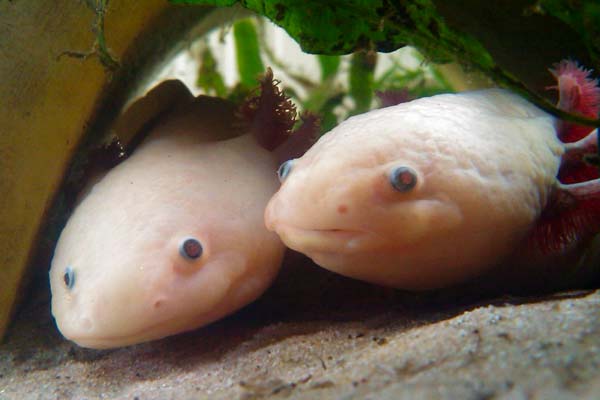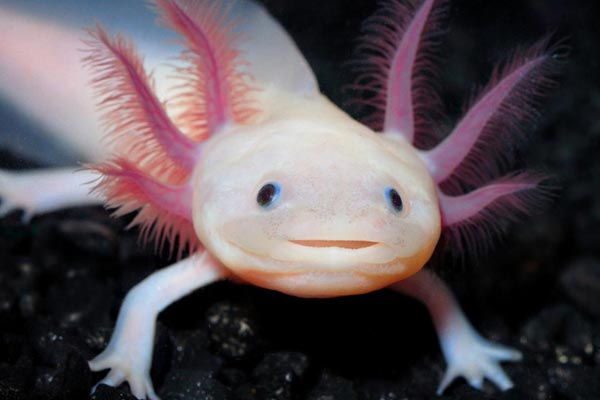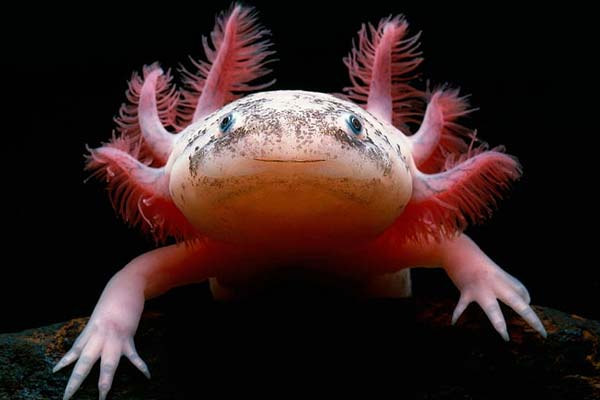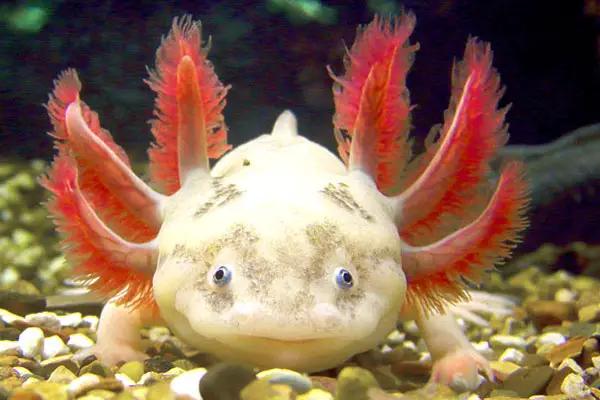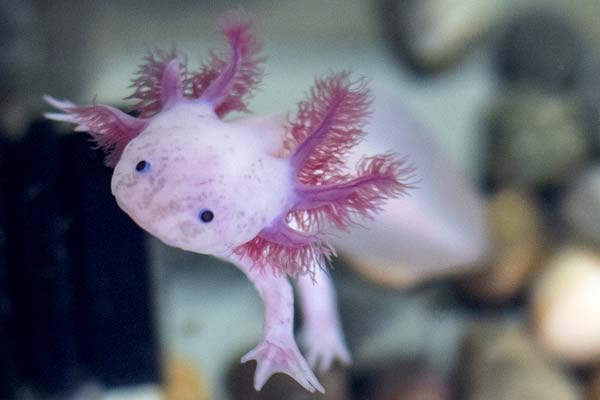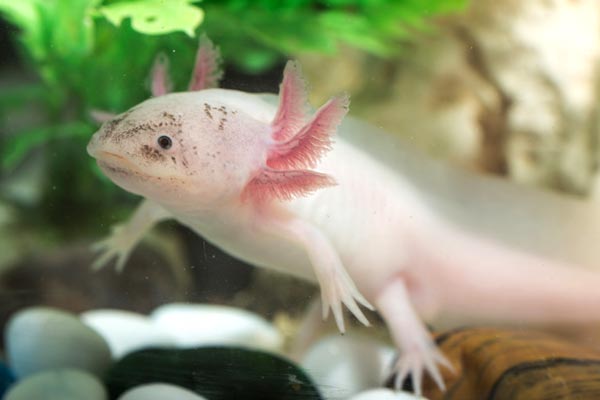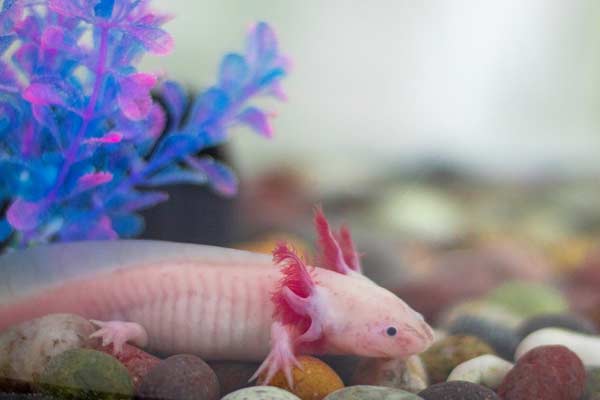Do Axolotls Bite? Everything You Need to Know
Axolotls are fascinating creatures that have become increasingly popular as pets in recent years. These amphibians are known for their unique appearance and ability to regenerate lost body parts. However, many people have one question: “Do axolotls bite?”
The short answer is yes; axolotls can bite. They may bite other axolotls that annoy them or wander into their territory and nip at their owner’s fingers while feeding.
However, it’s important to note that axolotls are not aggressive animals, and biting is not their natural behavior. In most cases, biting occurs because the axolotl perceives a threat or mistakes the owner’s fingers as food.
Even though axolotls can bite, they must understand that their bites do not hurt. They may cause some mild discomfort in the area, but no significant pain is involved. This makes axolotls safe even for children to handle, although it’s important to note that they are not to be held or petted.
Understanding Axolotl Mouth Structure and Feeding
Axolotls are fascinating creatures with unique body parts that help them survive in their aquatic environment. One of their most notable features is their mouth, designed for efficient feeding.
Description of an Axolotl’s Mouth Anatomy
Axolotls have a wide, flat head with a large mouth that can open wide to capture prey. Their mouth is on the underside of their head and lined with small, sharp teeth. Unlike most animals, axolotls do not have true teeth. Instead, their teeth are made of cartilage, which makes them more flexible and less prone to breaking.
Explanation of Axolotl’s Lack of Teeth
Axolotls lack true teeth because they are not necessary for their diet. They mainly feed on small aquatic animals like worms, insects, and small fish, which they can easily capture and swallow whole. Additionally, their diet is primarily carnivorous, so they do not need teeth to grind up plant material like herbivores.
How Axolotls Feed
Axolotls feed by opening their mouths wide and sucking in water with their prey. They use their gills to filter out the water and extract oxygen while the food is pushed toward the back of their throat. Axolotls have a strong bite and can nip at their prey to capture it.
In captivity, axolotls can be fed various protein-rich foods like bloodworms, brine shrimp, and pellets designed explicitly for axolotls. Ensuring their diet is balanced and meets their nutritional needs is essential.
Reasons Why Axolotls Bite
Axolotls are generally docile and friendly creatures. However, there are certain situations where they might feel threatened or stressed, leading them to bite. Here are some reasons why axolotls might bite:
Self-Defense Instincts
Axolotls have a natural self-defense instinct that can cause them to bite when they feel threatened. This is especially true when they are first introduced to a new environment or feel their territory is being invaded. In these situations, they might perceive fingers or hands as a potential threat and react by biting.
Mistaking Fingers or Hands for Food
Axolotls are opportunistic feeders and might mistake fingers or hands for food. This is more likely to happen when they are hungry or have impaired vision. In these situations, they might bite out of curiosity or to test whether the object is edible.
Stressful Situations
Axolotls are sensitive to stressful situations and might bite as a result. This can happen when they are exposed to loud noises, bright lights, or sudden movements. In these situations, they might bite as a way to protect themselves or to express their discomfort.
In general, axolotls are not dangerous, and their bites are not harmful to humans. However, it is crucial to handle them with care and avoid stressing them out unnecessarily. Owners can minimize the risk of biting behavior by providing them with a comfortable and stress-free environment.
Axolotls are social animals and might exhibit biting behavior to establish dominance or assert their place in the social hierarchy. This is more likely to happen in crowded environments or when multiple axolotls are housed together.
Do Axolotls Bite Humans?
Axolotls are known to nip at their owners’ fingers while feeding, and they may bite other axolotls that annoy them or wander into their territory. However, it is essential to note that axolotls do not typically bite humans, and their bites are not dangerous.
Most people find axolotl bites uncomfortable due to the sandpaper-like feeling they cause. However, the bites are generally not painful for humans and may even hurt the fragile axolotl more due to its delicate nature and the thickness of human skin.
Axolotls are not poisonous or venomous, and their saliva poses no significant threat to humans. Additionally, the axolotl’s bite cannot penetrate the skin. However, handling axolotls with care and avoiding stressing them out is still essential, as this can increase the risk of biting.
It is also important to dispel misconceptions about axolotl aggression. While they may bite if they feel threatened or agitated, they are generally not aggressive animals. They are known to have poor vision but a good sense of smell, so it is crucial to avoid startling them or approaching them too quickly.
If someone gets bitten by an axolotl, cleaning the wound thoroughly to prevent infection is recommended. While axolotls are safe to touch, it is crucial to handle them gently and avoid sudden movements that may startle them. Children should always be supervised when handling pet axolotls to prevent any mistakes that may harm the animal or the child.
Handling and Prevention Techniques
When handling axolotls, it is essential to follow safe practices to prevent injury to the owner and the amphibian.
Axolotls are delicate creatures whose bones can easily break if handled improperly. Here are some techniques to prevent bites and ensure the comfort of the axolotl during handling:
A. Safe Practices for Handling Axolotls
- Always wash your hands before and after handling an axolotl to prevent the spread of bacteria.
- Use a small net or your hands to move the axolotl from one place to another gently.
- Do not squeeze or grasp the axolotl too tightly, which can cause stress and injury.
- Provide a hiding place for the axolotl to retreat if it feels threatened.
- Respect the axolotl’s boundaries and do not handle it if it is uncomfortable.
B. Preventing Bites During Feeding and Cleaning
- Use a feeding stick or tongs to feed the axolotl to prevent accidental bites.
- Do not put your hands in the tank while cleaning or rearranging; this can cause stress and lead to bites.
- If necessary, use a small net to move the axolotl to a separate container while cleaning the tank.
C. Techniques to Prevent Axolotls from Biting Each Other
- Provide enough space and hiding places for multiple axolotls to coexist peacefully.
- If necessary, separate aggressive or territorial axolotls into their tanks.
- Monitor the axolotls during feeding to prevent competition and aggression.
Keeping Axolotls with Other Fish
Axolotls are social animals that thrive in a community of their species. However, they can also be kept with other fish species if certain factors are considered.
Compatibility of Axolotls with Other Fish Species
Axolotls are not compatible with all fish species. They are known to be territorial and can be aggressive towards smaller fish that they perceive as prey. Therefore, keeping them with larger, more peaceful fish species that won’t be perceived as a threat is recommended. Some fish species that are known to be compatible with axolotls include:
- Rosy barbs
- White cloud mountain minnows
- Zebra danios
- Bristlenose plecos
- Corydoras catfish
Factors to Consider for Tank Mates
When considering tank mates for axolotls, it is vital to consider the size of the tank and the size of the fish. Axolotls require a minimum of 20 gallons of water per individual, and additional space should be provided for each additional fish. It is also vital to ensure that the fish species have similar water temperature and pH requirements as axolotls.
Maintaining a Harmonious Tank Environment
Providing adequate hiding places for axolotls and fish species is vital to maintain a harmonious tank environment. This can be achieved by adding plants, rocks, and other decorations to the tank. It is also essential to avoid overfeeding the fish species, as this can lead to excess waste and poor water quality.
Frequently Asked Questions
How to Stop Axolotls from Biting Their Owner
Axolotls are known to bite their owners, especially during feeding time. However, there are ways to prevent them from biting:
- Use tongs or a pipette instead of fingers to feed axolotls, as it helps them associate food with those tools rather than fingers.
- Avoid sudden movements and loud noises around axolotls to prevent stress and aggression.
- If your axolotl is biting you frequently, it may be a sign of stress or illness, so it is essential to consult with a veterinarian.
Safety Guidelines for Touching Axolotls
While axolotls are generally safe to touch, it is essential to follow some safety guidelines:
- Always wash your hands before and after handling them to prevent the spread of infection.
- Avoid touching their gills or other delicate body parts, which can cause discomfort.
- If an axolotl bites you, clean the wound and monitor it for signs of infection.
If you experience any discomfort or swelling, seek medical attention.
Potential Danger of Axolotl Bites to Humans
Axolotl bites are typically harmless to humans since they lack venom or poisonous secretions. However, they can cause discomfort and minor bleeding. It is important to clean the wound thoroughly and watch for signs of infection.
In rare cases, allergic reactions to axolotl bites may occur, necessitating medical attention if symptoms arise.
Training Axolotls to Prevent Biting
Axolotls can be trained to prevent biting through positive reinforcement. This involves rewarding good behavior, such as not biting, with treats or praise.
Being patient and consistent with training is essential, as it may take some time for them to learn. It is also important to avoid punishing them for biting, as this can cause stress and aggression.
Managing Aggressive Behavior Among Axolotls
Aggressive behavior among axolotls can be caused by stress, territorial behavior, or dominance. Providing them with a calm, stress-free environment is essential to manage aggressive behavior. This can be achieved through proper tank setup, regular water changes, and avoiding sudden movements or loud noises around them.
It is also essential to respect their social hierarchy and only introduce new axolotls with proper acclimation. If aggressive behavior persists, it may be a sign of illness, so it is essential to consult with a veterinarian.
Conclusion
Axolotls are known to bite, but it is not a behavior that is exhibited frequently. They are carnivores, and biting is a natural part of their feeding process. However, they may also bite if they feel threatened or annoyed. Handling axolotls with care and gentleness is vital to avoid any biting incidents.
Axolotl bites can hurt, but they are not dangerous to humans. Axolotls do not have any venom or harmful bacteria on their skin that can cause harm to humans. It is still recommended to wash hands before and after handling axolotls to avoid any potential bacterial contamination.
Axolotls may bite each other, especially if they feel threatened or compete for food or territory. Providing adequate space and resources for axolotls is crucial to minimize any potential biting incidents.

